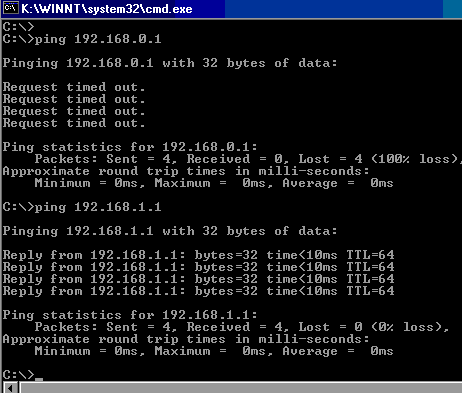

For all interested, I recommend my article about the modern version of ping: The modern version of ping: Test-Connection See also
#Ipv6 ping transmit failure home network windows#
In this article, I’ve tried to show the four most common situations causing an unknown error in ICMP echo requests on Windows systems. Who has broken the firewall? Without allowing outgoing ICMP Request ping leads to “General failure”.Īllow ICMPv4-Out in Outbound Rules. The device is able to send and receive packets on the network. Which dude has deactivated the IPv4 Procotol and why? Nobody knows… Without activated IPv4 Protocol ping returns “General failure”.Īctivate the IPv4 Protocol in the settings of your network card (ncpa.cpl). For IPv6 ping ::1 Ping a home address to verify the information from the Netstat HOME/-h. Configure a default gateway, which is in the same subnet as your host. But that is not the case, the router is in the network 192.168.1.0/24 and thus in another subnet. That means that every IP address of the gateway in the range 192.168.0.1 – 192.168.0.254 is ok. In the sample screenshot, the IP address of the router or default gateway should be located in the network 192.168.0.0/24, because the client is on this network. If this is not the case, Windows reports “General failure”.

The router must be in the same subnet as the “pinging” host. In the screenshot below, the computer knows what to do, because there is a routing entry for the default route and the IP Address of the default gateway is present. Part 2 I give you what the problem ended up being. Part 1 We hit the crime scene together and we work methodically together to. To keep it simple: The computer does not know what to do with the ICMP packet. It is time for the Case of the Failed IPv6 Ping. This happens, when the computer tries to reach a host outside it´s own subnet. If the default gateway entry is missing, the message “General failure” could appear. In this arcticle, I describe the most common configuration errors, which cause the general failure. Ping tests the network connectivity between systems. Had to combine what everybody said and use it as a hint.What to do if ping returns general failure? One of the most common command line tools on all platforms is the command ping. Like ::/0 to make a default gateway path) Netsh interface ipv6 add route *IPv6Address/Integer(Prefix)* *Name of Interface* *Next hop* " (this can be changed how your network is setup. I checked my routing table with netstat -rn and I did not find an entry regarding my fd00::/64 dhcpv6 prefix. To identify the cause of Internet connection problems from computers on your local network, start with ping tests from a local computer on your network to. I figured it out! It seems for some reason my DHCPv6 server is not sending out the subnet prefix. I turned off the firewall on both systems. In this case the only alternative it to attempt a connection to a known open port and see if you can temporarily establish a connection. I did try ping -6 as well to force IPv6.Īnother possibility is that the host has been configured not to respond to pings (note that the IPv4 and IPv6 rules may be different if a firewall is involved). Ping6 is now part of regular ping in Windows 2008 (The Command is no longer there). What command are you using for doing your ping? Generally you will need to use the ping6 command to ping IPv6 addresses Netsh interface ipv6 add address "Local Area Connection 2" fd00::1 now ping works. This causes it to loose IPv6 connectivity after some time, the exact time depends on how long the lifetimes in the RA are set to. The odd thing is that when I create a static IPv6 address

#Ipv6 ping transmit failure home network code#
"PING: transmit failed, error code 1231." tables and send ping requests directly to a system on an attached network. However when I try to ping the server I receive a The ping command sends Internet Control Message Protocol (ICMP) ECHOREQUEST. You can find it by opening the Start menu and typing cmd in the search box. So now PC1 picks up the DHCPv6 address and DNS from the server. The easiest way to do this is to use the Command Prompt: Run the Command Prompt as an administrator. Ping syntax is the same for nearly every type of system. Netsh interface ipv6 set interface "Local Area Connection 2" advertise=enable managed=enable Ensure all firewalls, including FortiGate security policies allow PING to pass through.

I setup another Windows 2008圆4 system (PC1) as a test system.įor this system I enabled stateful mode by using netsh I have a Windows 2008圆4 DHCPv6 and DNS server setup with a static IPv6 address.


 0 kommentar(er)
0 kommentar(er)
